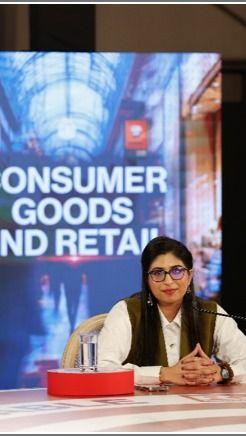
Editorial: Soaring inflation
Food prices continue to remain a pain point for the country’s policymakers.
While the ongoing efforts are aimed at keeping the retail inflation reined in at 4% on a sustainable basis, the bouts of unpredictable surge in inflation have been causing concern.
India’s consumer price inflation rose to a 14-month high of 5.
81% in October, driven by increased vegetable and edible oil prices.
This has dampened immediate expectations of a rate cut.
With inflation not expected to return to the 4% medium-term target until at least 2026, there are widespread fears that the rate cut could be delayed further.
Though the Reserve Bank of India’s tolerance threshold is 6%, rising import taxes and climate risks, coupled with the unpredictability of the Trump administration’s stance on trade tariffs, could further strain household budgets and inflation forecasts.
The country’s retail inflation for September reached 5.
49% from 3.
65% in August, reflecting an uptick primarily due to higher food prices.
Price pressures last drove inflation above RBI’s 6% upper threshold previously in August 2023.
While the RBI monetary policy did mention the October inflation hump, the extent of the inflation spike may not provide any comfort as the November reading is also tracking at elevated levels.
The RBI has kept the repo rate elevated at 6.
5% to keep inflation contained.
The repo rate is the rate of interest at which the central bank lends to other banks.
The economy is projected to grow at a robust 7.
2% this fiscal, but inflation could dampen this optimism if it continues to erode people’s purchasing power.
Despite macroeconomic indicators being robust and stable, the battle against inflation is not over yet.
There are additional concerns in the wake of intensifying geopolitical tensions that may disrupt energy supplies and take crude prices further higher.
Since February 2023, the RBI has kept the repo rate unchanged at 6.
5%.
Though the RBI is open to interest rate cuts, it remains cautious now due to persistent food inflation and geopolitical risks.
At the heart of the current inflation spike is the cost of essential food items, especially vegetables and edible oils, which are key components of every household’s grocery list.
The RBI now faces the delicate task of managing inflation without stifling growth.
The root cause of the price hike in essential food items lies in a combination of domestic and external factors.
Uneven rainfall has disrupted the production of key vegetables like tomatoes, leading to a significant price hike.
At the same time, the government’s decision to raise import duties on edible oils has compounded the problem, adding further stress to an already stretched household budget.
Food prices disproportionately affect lower and middle-income households.
The next few months will be critical in determining how effectively the government and the RBI can manage these pressures and ensure that inflation does not spiral out of control.
.
Related Articles
business
PSB’s Record 26% Profit Growth in First Half FY25
November 12, 2024

New Delhi: The finance ministry on Tuesday said that public sector banks (PSBs) have shown robust performance in the first half of the current fiscal year with a 26 per cent growth in net profit, increase in business and decline in non-performing assets (NPAs).
Besides, the aggregate business of 12 PSBs, including top government banks such as State Bank of India and Punjab National Bank, stood at Rs 236.
read morebusiness
Eveready Industries consolidated profit jumps 16% for Q2FY25
November 12, 2024

Dry cell battery major Eveready Industries on Tuesday reported around 16 per cent year-on-year increase in its consolidated net profit to ₹29.
56 crore for the second quarter this fiscal from ₹25.
read morebusiness
Bawna Pagaria, Co-Founder & CEO of Indiazona, On Empowerment of Small Businesses
November 12, 2024

India Economic Summit: Bawna Pagaria, Co-Founder and CEO of Indiazona, speaking at the India Economic Summit (IES) 2024, shared her entrepreneurial journey and insights on empowering small and medium businesses (SMBs) in India.
During her address, Pagaria highlighted the critical challenges facing Indian SMBs and the role of Indiazona in bridging these gaps to foster growth and innovation.
read more